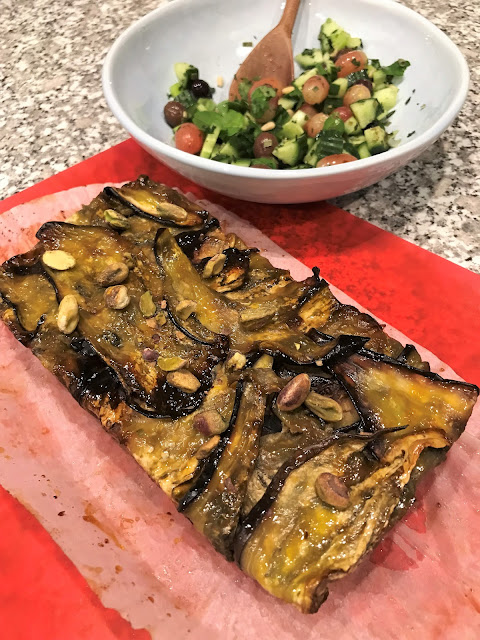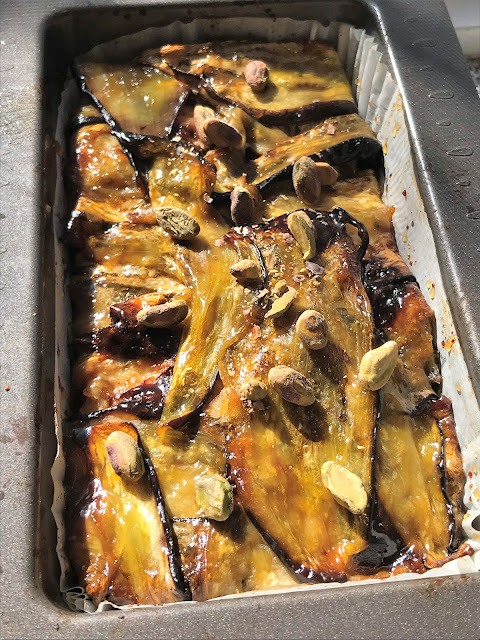Does anyone else watch the English Heritage videos on YouTube from Audley End, a stately listed house in England? I adore the cook - Mrs. Crocombe - as played by Kathy Hipperson, (along with several other re-enactors). And I am a big fan of Dr. Annie Gray, the English food historian, who has also played Mrs. Crocombe.
This recipe is from the book How To Cook The Victorian Way with Mrs. Crocombe by Annie Gray and Andrew Hann. So I thought this one looked good, and I made it, and it was a sad travesty of a biscuit. Their fault? My fault? I think that our warm, humid Brissie weather has a vastly different effect than chilly Brit weather on a soft dough like this one. So I determined to try it again, with a chilly twist. And it worked beautifully!
.jpg) |
| golden, crispy and chocolatey - and blingy! |
Here we have attempt number two. The first time the dough was clearly too soft and turned into a big puddle after baking. Also the instructions about which size of spoon to use, and the bit about dipping them in melted chocolate was seventy pages further in, as a tiny footnote to Mrs. Crocombe's original manuscript! What the?! It was sheer luck I found it at all. But I'm very glad I persevered as they were "stonking" as YouTuber Barry Lewis often proclaims.
 |
| Kathy Hipperson as Mrs. Avis Crocombe |
Recipe by Mrs. Avis Crocombe (adapted by Dr. Annie Gray and Andrew Hann)
Makes about 24: (I made 26!)
ingredients:
115g./4 oz butter, softened (not melted)
140g./5 oz caster sugar
85g./3 oz plain flour
85g./3 oz arrowroot flour
2 eggs, lightly beaten
1/2-1 scant tsp orange flower water
100g./3.5 oz chocolate - dark or milk, your choice
Bling, if you like - I added lots of gold and silver and multi-coloured balls and sprinkles
Method:
Cream the butter and sugar together in a medium mixing bowl
Sift the plain flour and the arrowroot flour together in a separate bowl
Vigorously stir the beaten eggs into the butter and sugar, adding some of the flour mixture as you go, so it doesn't curdle
Then fold in the rest of the flour mixture, and the orange water
Now into the fridge for at least 30 mins. or the freezer for 15 mins.
Drop teaspoons of the mixture onto lined baking trays - six fits nicely on a tray, so you will need to make a few batches (and keep the dough in the fridge in between batches)
Bake for 15 minutes at 180C/350F till the edges are golden
Cool for a few minutes on the trays, then place onto wire racks
Once cool, melt the chocolate (I used Lindt milk) and brush it over the tops with a silicone brush, or just dip them in bodily
And bling like crazy!
Notes:
I suggest using small to regular eggs. I only had large eggs, which I feel were too much! Remember that Victorian-era eggs were smaller than current day eggs
These biscuits like to spread so leave plenty of room on the trays
I didn't have enough arrowroot flour so I had to add some cornflour (cornstarch to American cooks?) to bulk it up. I was thinking of using some rice flour but apparently you have to halve the amount, so I thought that was way too confusing :-)
.jpg) |
| ingredients gathered |
.jpg) |
| add the beaten eggs once you have creamed the butter and sugar |
.jpg) |
| start stirring in the flours |
.jpg) |
| flours and orange water beaten in |
.jpg) |
| dough ready for the fridge or freezer - a heart or a bottom? :-) |
.jpg) |
| ready for some baking @180C for 15 mins. |
.jpg) |
| slightly burnt broken-up scraps of biscuit - 1st sad attempt |
They stuck together in a huge puddle of slightly burnt dough! Mr P. said they tasted good anyway.
.jpg) |
| golden and crispy - yay, successful 2nd bake! |
.jpg) |
| brushed with milk choc and blinged up! |
.jpg) |
| and plated nicely :) |
.jpg) |
| © Sherry M. |
This is the Maranta arundinacea plant (also known as arrowroot); the one most commonly used to make arrowroot flour though other plants are also used. It is a large perennial herb with an edible rhizome, from which they make the flour.

.jpg)
.jpg)
.jpg)
.jpg)
.jpg)
.jpg)
.jpg)
.JPG)
.jpg)
.jpg)
.jpg)
.jpg)
.jpg)
.jpg)
.jpg)
.jpg)
.jpg)

.jpg)
.jpg)
.jpg)
.jpg)
.jpg)
.jpg)
.jpg)